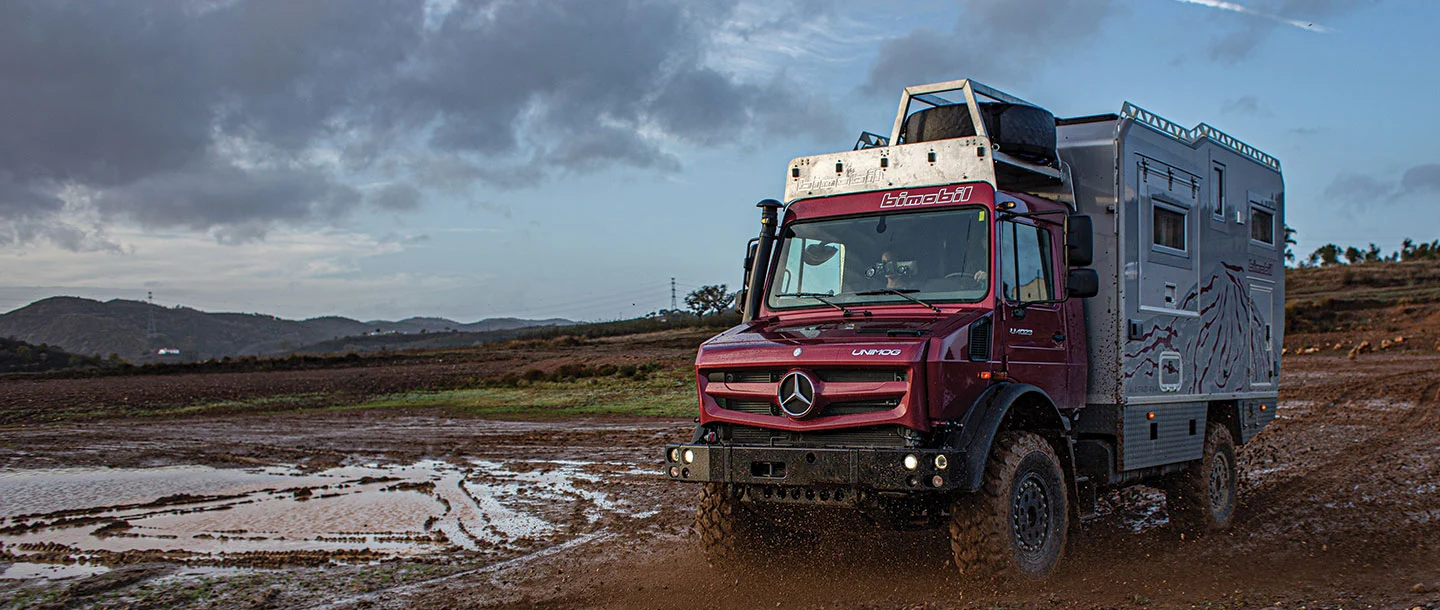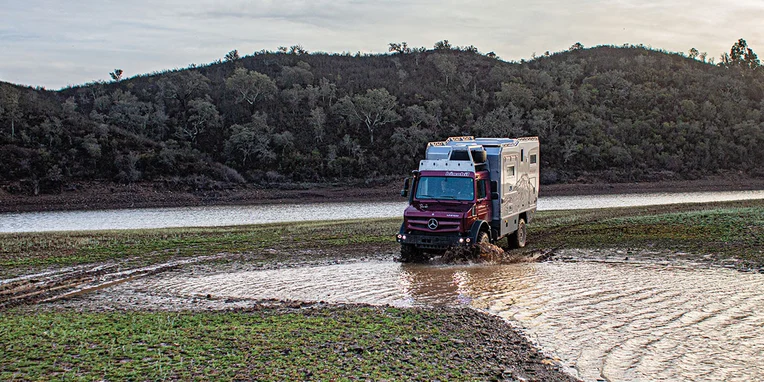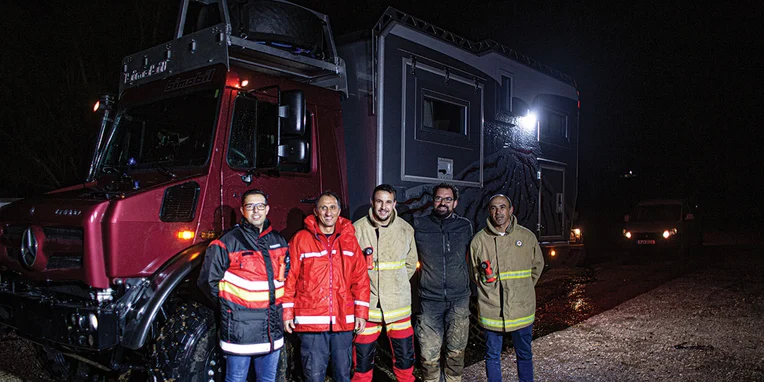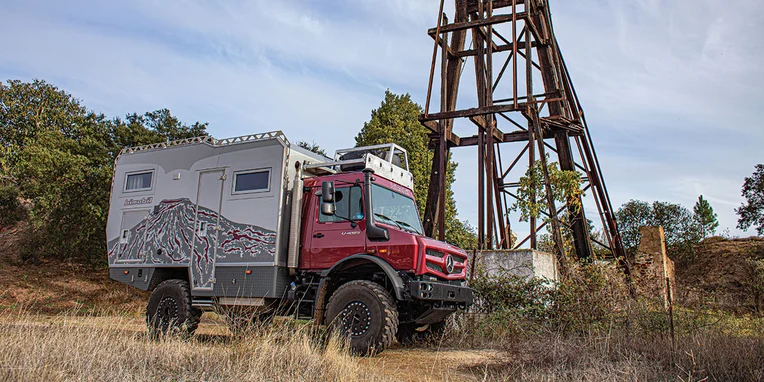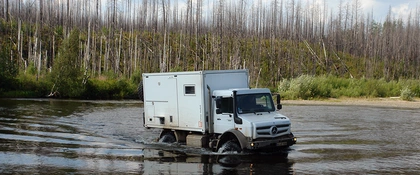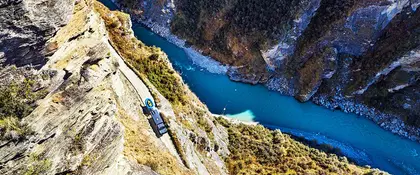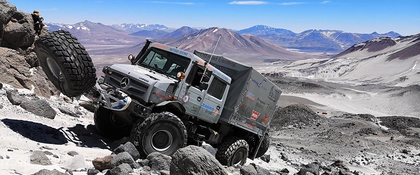Heading down south for an expedition in the Unimog U 4023 – a travelogue.
The last expedition from "Lost Cultures, Forgotten Heroes" with a Unimog took the team to a beautiful European destination: Portugal. And their trusty sidekick for the adventure was a 231 hp, almandine red metallic U4023 test vehicle with a spacious motorhome body from bimobil. The vehicle dimensions of 7.00 x 2.48 x 3.60 metres gave the bodybuilder plenty of freedom to come up with some clever stowage space solutions. And let's face it, it's an impressive piece of engineering, weighing in at 9.8 tonnes.

Made for adventures.
In addition to a fording depth of 1.20 metres and a ground clearance of almost 50 centimetres, the approach and departure angles of the Unimog are also plenty big enough. Even steep uphill climbs of 45° are no problem thanks to its reduction gear.
Technological assistance is provided by a reversing camera with a screen mounted in the ceiling area on the co-driver's side. The well-organised and clearly structured dashboard enables comfortable access to all controls.
Also noteworthy is the unusually generous feeling of space on-board, with plenty of headroom in the cab. Besides plenty of space behind the seats, there is also a practical stowage compartment between them. Plus, as an optional alternative to this, it is also possible to select a third, albeit non-sprung, seat.
Power off-road.
The Euro 6 four-cylinder OM 934 engine series delivers 900 Newton metres of torque from 5.1 litres of displacement and starts with an impressively sonorous sound. Gears are pre-selected using the selector lever of the automated 8-speed manual transmission. And the vehicle also offers the possibility of engaging gears using the gearshift paddles or, in difficult driving situations, to switch to completely manual operation using the clutch. To do this, the driver has to pull a lever above the clutch pedal which enables the pedal to be folded down and used as normal immediately after.
Start in Munich.
The Unimog starts moving with just a light press of the accelerator pedal. After setting off in Munich, the approximately 600-kilometre journey initially takes the team along the motorway in the direction of the Ruhr region. The Michelin XZL 365/80 R20 tyres on the two-piece Hutchinson aluminium rims with beadlock only start to hum upon reaching 90 km/h. At this speed, the engine remains very quiet and, thanks to cruise control, the journey is completed entirely stress-free. With the tyre and transmission combination of the vehicle, it would theoretically even be possible to drive at a speed of around 110 km/h.
